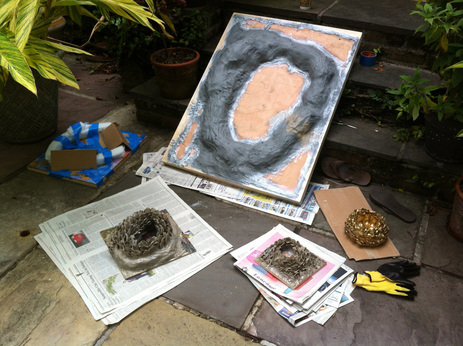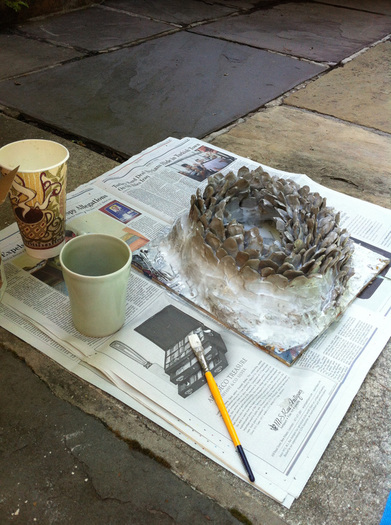I have left Los Angeles (and the comfort of my Inglewood studio) to spend some time in New York. This transitional period has me contemplating the role and importance of the studio within my personal art practice.
What does it mean to be an artist sans studio?
As someone who depends on scheduled work time and a designated place of production, I must now evaluate what it means to be an artist without a studio. More specifically, what does it mean to be a studio-based artist, one who even keeps a blog dedicated to their studio life and progress, when there is no longer an assigned place to create?
For some artists, especially those whose practice is rooted in the conceptual realm, the role of a studio is less critical. The studio functions solely as a place where the concepts are executed in physical form, and many times, conceptual artists are able to continue their practice whether they have a work space or not. For these artists, the studio does not impact the art in the same way that it does a studio-based artist.
For some artists, especially those whose practice is rooted in the conceptual realm, the role of a studio is less critical. The studio functions solely as a place where the concepts are executed in physical form, and many times, conceptual artists are able to continue their practice whether they have a work space or not. For these artists, the studio does not impact the art in the same way that it does a studio-based artist.
For myself, the studio is an important part of the creation. Not only is it a place to work through practical issues, trying different methods and materials, but it is also a place for developing imagery and form. The studio has a direct impact on the work that is created within. The size of the space determines the scale of the art. For example, when I have a vast space to produce, I'm able fill it rapidly with large works that are scaled to the human body. And, if I only have a small studio, I reduce the scale to that of a maquette. The scale of the piece is not the only aspect influenced by the studio; the subject also reflects the space in which a piece was created. When my studio was tucked away in the back corner of the graduate warehouse at Otis, the work began to react to its surroundings by referencing hives, nests and other structures in nature that connote a sense of seclusion or security. These pieces usually included a singular opening, or void, which allowed the viewer one point of entry into the work. When I relocated to a more open, shared studio, there was a shift in the art. The voids, which were previously singular entities, multiplied as I moved into a collective space. I create in a reflexive way by reacting to my surroundings; therefore, the place of production plays a considerable role in my art practice. It will be interesting to see what changes develop as I spend this time moving around...
Perhaps it's not 'artist sans studio' but rather 'mobile studio artist'.
Perhaps it's not 'artist sans studio' but rather 'mobile studio artist'.




 RSS Feed
RSS Feed
